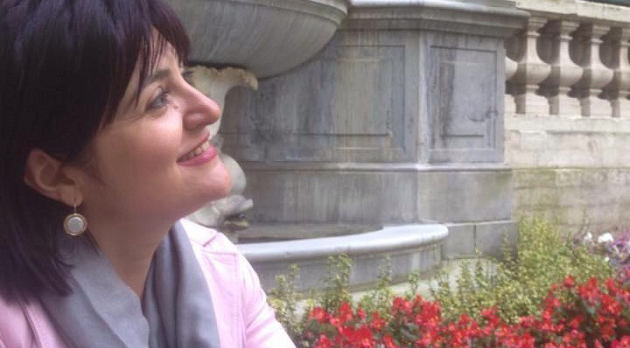Evaluation of the Results of Yerevan State Medical University (YSMU) HOSPITALS’ Landscaping Reorganization According to Climate and Acoustic Level
Department of Hygiene and Ecology, Yerevan State Medical Univetsity, after M. Heratsi, Yerevan, Armenia
K.K. Vardanyan
Department of Public Health, Yerevan State Medical Univetsity, after M. Heratsi, Yerevan, Armenia
A.K. Hayrapetyan
Abstract: The aim of the presented research was to study the effect of hospital greenery on the noise, humidity and temperature of the air status. The study has shown, that even small green planted areas influence on the microclimate alleviating the temperature and relative humidity of the air on the territory and allow to testify that the rational plantation of MPI (Medical Preventive Institutions) is able to reduce the acoustic level and provide a proper treating-preventive regimen in the hospital.
The comparison of microclimatic indices of the planted territory of the hospital area both in the morning and evening investigations has revealed a great difference. Morning investigations, carried out in 2009 and 2010 have proved that compared with the open territory in green plantations the temperature of the air is, on average, lower by 1,8 and 1.4ºC correspondingly. In the evening investigations of 2009 and 2010, on average, the indices studied in the green plantations are by 2,5 and 2 ºC lower compared with the results obtained in the open territory.
Yerevan differs for its continental climate and is characterized by stable hot, dry summer, which is of special interest due to the unfavorable influence of the surplus heat on the human organism resulting in the organism overheating and tension of the thermo regulating apparatus function.
The study has shown that in the morning investigations, carried out in green plantations in 2009 and 2010 the relative humidity was on average 17,3% and 18,9% correspondingly higher compared with the open territory. In the evening investigations, carried out in 2009 and 2010, the indices in green plantations were on average 6,6% and 9% correspondingly higher compared with those obtained on the open territory.
Two-year dynamics, when investigating the acoustic level in different areas of the hospital and adjacent to the hospital territories, has revealed higher indices in Abovyan Street, where the acoustic pollution was the highest. A significant difference is noted comparing the results obtained in Abovyan Street with the ones obtained from the green territory of the hospital and the garden-park zone.
INTRODUCTION
In conditions of intense growth of cities the problem of maintaining and healing the urban environment, formation of conditions protecting the human health is becoming topical. One of the most effective measures for improving and healing the urban environment according to the results, realization terms and the expenses, is the plantations [1].
The problem of hygienic normalization of the southern city microclimate is of great interest related to the unfavorable influence of the redundant heat on the human organism. The creation of artificial microclimate in southern towns with the help of rational plantations of their territory is of utmost importance.
The continental and dry climate of Yerevan is the main cause of unfavorable sanitary-hygienic conditions.
Besides the climate, it is caused by the absence of natural forest tracts, asphalt covering, dense building. Long-term hot and burning summer, when the temperature increases up to 42ºC at low humidity, creates rather unfavorable hygienic conditions [2, 3].
For many years the hygienists have focused their attention to the rationing of the general square of green plantations for one person. Scientists’ opinion on setting norm significantly differs and fluctuates within 18-67 m2 of urban plantations for 1 person [4].
According to the official data for climatic conditions of Yerevan, the green plantation square used by 1 urban resident should be 28,8 m2 . However, mass cutting down at the beginning of the 90s and the new tendencies in municipal building resulted in increase of dense building and decrease of green square which brought to a sharp decrease in the index of green plantation provision for one person by 3-4 times. Today it is equal to 4,5-5,0 m2 which is 10 times less than the norm 50 m2 set up by the WHO resolution [5-8].
Problems of greenery are obtaining more topical character related to the preventive-medical institutions; there is a direct link between the hygienic conditions of hospitals and patients’ health. In the contemporary understanding the hygienic factor is an integral part of the whole complex of preventive-medical measures. The project of hospital environment demands deep scientific approach. The norms should be worked out considering the profile of the hospital and in accordance with a person’s natural needs for great comfort [9].

Long-term multilateral investigations have revealed the important role of green plantations in improving the microclimate of urban territories and protecting the town against the noise. The investigation of town noise has shown that of all the resources of noise the most powerful and widespread is the municipal transport. Struggle against noise is specially important in PMI, as the ill man reacts more sharply to the noise which influences the efficacy of the treating process [10, 11].
Taking into account all the above mentioned, widerange reorganization of greenery has been carried out in the YSMU clinics. As a result of complex assessment of chemical, architectural-planned, socialhygienic factors in the hospital conditions we have worked out and introduced new principles of greenery directed to healing and making the hospital environment esthetic [6].
The present paper is one of the fragments of the scientific project for evaluating the greenery reorganization conducted in the YSMU clinics. The aim of this work is to evaluate reorganization of plantations according to the microclimatic indices and the level of the noise in and round the hospital areas.
MATERIAL AND METHODS
For comparative evaluation of microclimatic indices on the hospital territory we have measured in two points: 1. The open territory (later it is marked as “1” in the table). 2. Territory planted with trees and gardens (later “2” in the table).
To give a relative evaluation of the noise level we have measured in five points:
1. Abovyan Street (“1” in the table).
2. Open not planted territory 15 m. far from Abovyan Street (“2” in the table).
3. Planted territory 15 m far from Abovyan Street (“3” in the table).
4. Open not planted territory 45 m far from Abovyan Street (“4” in the table).
5. Garden-park zone of the hospital 45 m far from Abovyan Street (“5” in the table).
The results of measuring microclimate parameters were compared with the sanitary hygienic norms on the base of which was conducted the evaluation of the microclimatic indices and the noise level on the hospital territory. The microclimatic indices and the noise level on the studied territories were measured with devices corresponding to the state standard demands, they have been registered and got a certificate of RA State Standard.
To measure the temperature and relative humidity of the air Assman’s aspirative psychometer (produced in the former USSR) was implemented [12].
To investigate the influence of planting on the acoustic pollution level in the hospital area a noise and vibration measuring instrument MNV-003 was used (produced in the former USSR, it is suitable for technical observation by all the parameters: diapasone measuring 22dB-140dB, 1% class accuracy, it is of small size and portable). Statistic processing of the data was carried out with the help of personal computer by using Microsoft Excel 2007 and XLSTAT 2009 programs. Student’s t-criteria were used for comparing the average significance. Common indices of descriptive statistics were considered: average arithmetic, standard mistake of the average, confidential interval (95% CI). The following were used in describing the results of the investigation: “average meaning (M) = standard mistake of the average (m)”. The difference of the investigated parameter significance was considered trustful by 95% of probability (P<0.05).
RESULTS AND DISCUSSION
The analysis of the data obtained in the dynamic of 2-year investigation of the microclimatic indices on the hospital territory, as well as the subsequent comparison of the results obtained on the territory of different hospital areas has revealed higher quantity of the considering indices on the open territory. The comparison of microclimatic indices of the planted territory of the hospital area both in the mornings and in the evenings of investigations ha revealed a great difference.

Our investigations have proved the results of the investigations conducted earlier [2, 3] and have shown that even insignificant green plantations in building conditions greatly improves the temperature regimen.
The data presented in Table 1 show that the morning investigations, carried out in 2009 and 2010 have proved that compared with the open territory in green plantations the temperature of the air is, on average, lower by 1,8 ºC and 1.4 ºC correspondingly.
In the evening investigations of 2009 and 2010, on average, the indices studied in the green plantations are by 2.5 ºC and 2 ºC lower compared with the results obtained in the open space.
Yerevan differs for its continental climate and is characterized by stable hot, dry summer, which is of special interest due to the unfavorable influence of the surplus heat on the human organism resulting in the organism overheating and tension of the thermo regulating apparatus function.
The data presented in Table 1 show that the morning investigations, carried out in green plantations in 2009 and 2010 the relative humidity was on average 17.3% and 18.9% correspondingly higher compared with the open territory.
In the evening investigations, carried out in 2009 and 2010, the indices in green plantations were on average 6.6% and 9% correspondingly higher compared with those obtained on the open territory.
The Table shows that the highest percent of relative humidity is observed during morning hours and on the territory with green plantations.
The University Hospital “Heratsi”, once being in the suburbs, in densely green area, is at present in the centre of the city surrounded mainly by motorways of Abovyan, Sharimanyan, Heratsi streets with a rather high level of acoustic pollution.
Analysis of the data obtained in two-year dynamics when investigating the noise level in different areas of the hospital and adjacent to the hospital territories has revealed higher indices in Abovyan Street, where the acoustic pollution was the highest. A significant difference is noted comparing the results obtained in Abovyan Street with the ones obtained from the green territory of the hospital and the garden-park zone.
The data presented in Table 2 show that during the morning investigations, conducted on green territory (3) and in the garden-park zone (5) the investigated indices, compared with the noise level in Abovyan Street in 2009, are lower by 12 dbA and 24 dbA correspondingly. The evening investigations conducted on green territory (3) and in the garden-park zone (5), have shown that compared with the noise level in Abovyan Street (1) in 2009 the investigated indices on average were lower by 12 dbA and 23 dbA correspondingly. In 2010 the same indices were lower by 11.2 and 23 dbA correspondingly.
To study the influence of green plantations on the noise level we have compared the indices on the planted and not planted territories of the hospital area which are 15 m equally far from the main road.
When comparing the results obtained from planted (3) and open territory (2), at the point (3), during the morning investigations of 2009 the noise level was, on average, lower by 4 and 5,6 dbA correspondingly. In the evening investigations 2010 the studied index was lower by 4 and 6 dbA correspondingly.
When comparing the results obtained from the garden-park zone (5) and open territory 45 m (4) of the hospital area, the same distance far from the street both in the morning and evening investigations carried out in 2009 and 2010, the noise level was, on average, lower by 10 dbA.
When comparing the results of the noise level obtained from the open territory 45m (4) and in Abovyan Street (1), both in the morning and evening investigations in 2009, the noise level in the gardenpark zone was, on average lower by 14 dbA. In 2010 the studied index in the morning investigations was lower by 15,2 dbA and in the evening by 13 dbA.
Mass survey and investigation of morbidity allowed to reveal the approximate border of unfavorable influence of the town noise. For MPI territories beneficial conditions related to the acoustic level are defined according to the data of different authors within 35-50 dbA [10].

CONCLUSION
We can conclude from the above mentioned that even small green planted areas influence on the microclimate alleviating the temperature and relative humidity of the air on the territory and allow to testify that the rational plantation of MPI is able to reduce the noise level and provide a proper treating-preventive regimen in the hospital.
The presence of a proper plantation corresponds to the traditional image of medical-preventive institutions and according to the international standards it is considered to be an essential condition for the patient who is restoring his/her health after receiving special medical aid.
Effective plantation of medical preventive institutions directed to improving the external and internal hospital environment from the health point of view, can be achieved only on the base of scientifically proved conception of plantation integrated into the program of the city plantation system l development.




